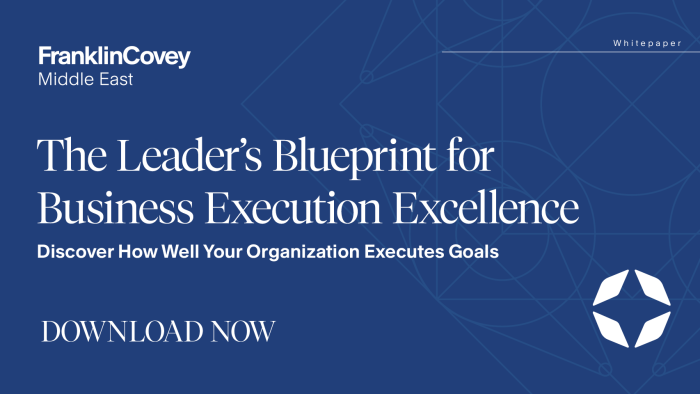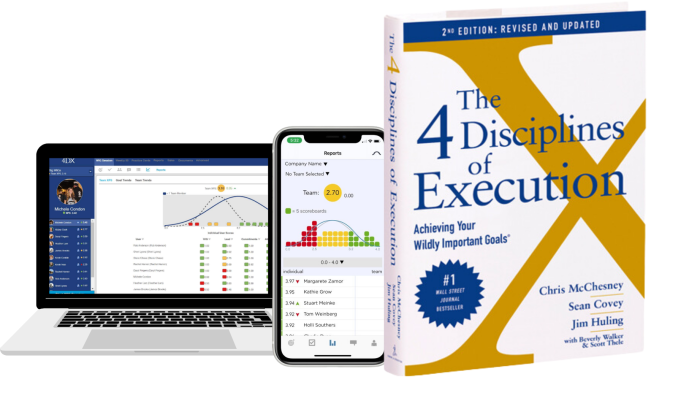
5 Steps To Successful Strategy Execution
Free Guide
5 min Read 🕑
Successful business execution is vital for any organization aiming to achieve its goals. FranklinCovey’s “The Leader’s Blueprint for Business Execution Excellence” outlines strategies and insights to bridge the execution gap and enhance performance. Here are the key takeaways
1. Understanding the Execution Gap
Many organizations face a significant gap between their strategic goals and actual performance. This execution gap is often due to a lack of clarity, commitment, action, and accountability within teams. Effective leaders need to identify these gaps and take steps to close them.
The 4DX Assessment
FranklinCovey, in partnership with Harris Interactive, has developed the 4DX Assessment—a web-based survey that helps organizations pinpoint their execution gaps. This tool measures execution capabilities across four critical areas:
- Clarity: Ensuring everyone understands the goals.
- Action: Knowing what to do and how to measure progress.
- Commitment: Gaining buy-in from all team members.
- Accountability: Holding each other responsible for achieving goals.
2. The Importance of Clear Goals
A significant issue in many organizations is the communication breakdown between leadership and frontline employees. Effective execution starts with clear, well-communicated objectives. Leaders must ensure that their team understands and aligns with the organization’s top priorities.
3. Managing Competing Priorities
In today’s fast-paced work environment, employees often struggle to balance daily tasks with long-term goals. Leaders need to help their teams prioritize effectively, focusing on the tasks that drive the organization’s key objectives. Reducing distractions and clarifying priorities can significantly improve execution.
4. Engaging Employees
Employee engagement is crucial for successful execution. Engaged employees are more likely to be committed to their goals and contribute positively to the organization. Leaders should encourage open communication, solicit feedback, and recognize contributions to maintain high levels of engagement.
5. Accountability and Measurement
Regular tracking and accountability are essential for maintaining focus on goals. Leaders should implement systems to provide visual feedback on progress and ensure everyone is held accountable. Consistent review and follow-up can help identify and address issues promptly.
Conclusion
Achieving business execution excellence requires a clear understanding of goals, effective prioritization, engaged employees, and robust accountability systems. By addressing these areas, organizations can close the execution gap and achieve their strategic objectives. The 4DX Assessment is a valuable tool for identifying execution gaps and guiding improvement efforts.
Ready to Transform Your Business? Download the full guide to discover how you can leverage execution to achieve breakthrough results.
Discover How Well Your Organization Executes Goals in Just 6 Minutes
It’s Free! Join over 800,000 leaders from various industries who have already benefited from the insights provided by the 4DX Assessment. In just 6 minutes, you can gain critical insights that might redefine how your organization achieves its most crucial goals.

From the archive
Explore all of our personal and professional development resources for individuals and organizations.









